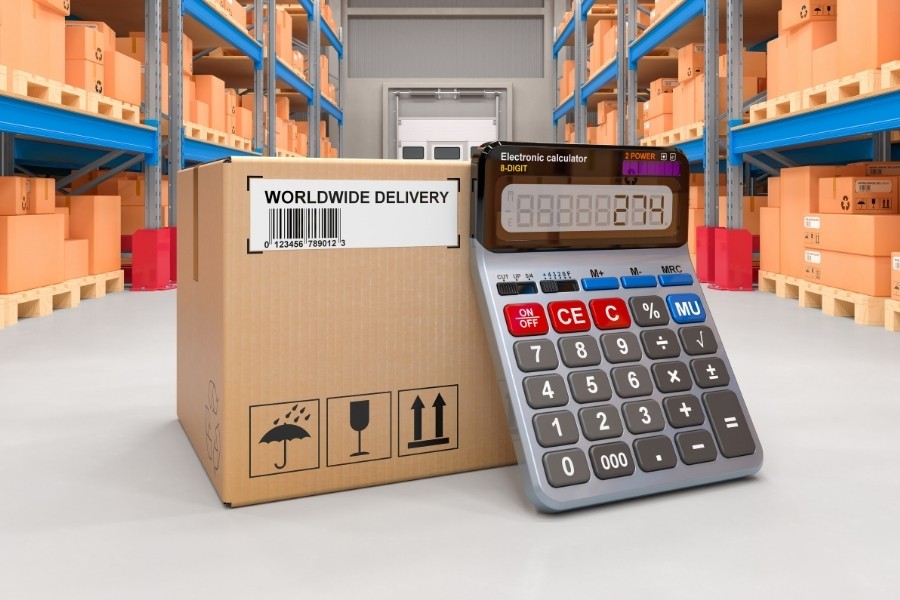Will Shipping Costs Ever Come Down Again?

Many businesses are facing higher shipping prices to transport goods. As the cost of transporting goods is part of every step of the supply chain, these price increases have reverberated throughout the economy. Consumers are looking for deals on excess inventory and turn to businesses shutting down warehouse operations or clearing out warehouse and getting rid of inventory. We are facing a downturn in the economy which usually makes consumers more sensitive to rising costs. Molson Coors Beverage Co, the maker of Coors beer and other beverages, said most of its cost inflation has come from transportation cost increases. Businesses and consumers are frustrated with the rising prices but before policymakers attempt to remedy the situation, they should look at why prices are rising in order to avoid policies likely to raise prices even further. Rising prices puts pressure on business owners, creating a need to reduce inventory levels and many are even shutting down businesses.
There is a perfectly reasonable economic explanation: Ocean carriers are raising prices in reaction to current increased demand and limited supply. Amid the pandemic, people were buying less, and in response, industries curbed production. As vaccines were rolled out and governments lifted pandemic restrictions, consumption increased and now, businesses are trying to catch up. The supply chain disruptions forced companies to sell excess inventory to closeout buyers and overstock inventory buyers who were better positioned to distribute these goods through the discount supply chain. These changes in demand are driven by changes in the market, but supply is partly circumscribed by policy problems that affect labor, immigration, and trade. These factors are contributing to distribution managers clearing out warehouse and reducing inventory to avoid either liquidating inventory or shutting down business operations entirely.
Carriers are raising prices to deal with elevated input costs such as higher fuel prices. Additionally, carriers face scarcity that affects their ability to quickly respond to increased demand for transportation; containers used to store and move goods are increasingly scarce and correspondingly expensive as a result of port bottlenecks. The large price increase of a 40‐foot shipper container has fluctuated by thousands of dollars over the last year. This dearth of containers is made worse by the scarcity of labor at ports that raise the cost of unloading cargo. If your company is carrying too much inventory in your warehouse and needs to get rid of old merchandise, one of the best options is to turn to companies that specialize in liquidating inventory and clearing out old stock. Excess inventory buyers are professionals who understand the closeout process and how to easily get rid of overstock. They can help you because you can sell the entire inventory in one shot and everything will be picked up quickly and generally payment is immediate. This liquidation process is much better than selling closeouts in small quantities a little bit at a time. One large sale can relieve your warehouse pressures quickly.
Businesses are finally getting some relief with supply chain costs. But shoppers probably won’t see any additional savings this holiday season, experts say. The cost of shipping freight containers across the Pacific Ocean has cooled from record highs hit during the pandemic, when demand for goods manufactured in Asia outstripped supply. At its peak in mid-September 2021, the average rate to secure a container on a ship from Asia to the U.S. West Coast reached $20,586, a 15-fold increase from early January 2020. Eventually, prices will come down for regular goods as well as overstock and excess inventory. Regular import costs will decrease, warehousing costs should decrease as demand lessens, and there should be a lot more overstock inventory on the market as businesses start clearing out warehouse space to reduce overhead. In addition, if we enter a recession in 2023 there will be inventory liquidations due to companies shutting down business and downsizing 3PL warehouse to save on storage.
By contrast, the average price for a freight container Friday was $2,720. But several factors — including big box stores grappling with overstocked inventory, preemptive holiday buying, and rising gas and labor costs — are holding retailers back from lowering prices on shelves. During the height of the pandemic, as global lockdowns forced everyone into their homes and took away chances to spend money on nights out with friends or vacations, consumers fed the economy by shopping online. The sudden demand for goods caused operational costs to soar — most notably, freight container shipping rates from Asia. If you are looking for surplus buyers to sell your closeouts to you may want to search online for closeout buyers and companies that buy overstock inventory. Some of the best search terms include words related to getting rid of inventory and liquidating stock. You can try these: closeouts, closeout buyers, clearing out warehouse, clearing overstock, shutting down business.
With a handful of major operators controlling the market, freight rates doubled, then tripled, then quadrupled. Freight costs from China and East Asia to the U.S. East Coast ports surpassed $22,000 last September, according to Freightos. In early January 2020, the average cost was $2,649. The demand for new products is low. Vendors, manufactures and retailers aren’t ordering as much from Asia, in part because consumer behavior has changed dramatically. We may be heading into a recession which will force distributors to get rid of any extra inventory to free up warehouse space. A lot of online sellers sent too much inventory to Amazon that isn’t selling or the profit margins are too low and they are now wanting to liquidate. Inflation, which remains red-hot at a 4o-year high, has forced shoppers to be more strategic about how they spend their money. That includes forgoing the apparel and electronics aisles to afford necessities like food and gas. With less discretionary income to spend, consumers are looking for special closeout buyouts and liquidation sales where they can get more for their money.
For wealthier consumers who aren’t as affected by higher prices, there’s a shift as well — in this case, toward more spending on experiences and entertainment. In March of this year, the general volume of consumer sales dropped precipitously. People began to feel like Covid is really effectively over and they aren’t going to buy things anymore because they already bought them … instead they would rather go to Italy for vacation. That’s not to say they won’t still spend money on special closeouts and overstock deals if there is a good deal, but there has most definitely been a change in the way people and spending and many are downsizing operations and getting rid of excess stock.
These shifting habits have hit companies hard. The nation’s dominant retailers have had to grapple with excess inventory. Target, Amazon, Walmart and Kohl’s have started their holiday sales earlier this year in an effort to offload inventory stockpiles. Major brands, including Nike and J.Crew, are offering steep discounts in an effort to clear stock from warehouses and get rid of too much inventory sitting in the warehouse. Retailers have also been more strategic this year about ordering their holiday inventory early to avoid the kind of supply chain headaches they experienced in 2021.
Freight rates have continued to fall as global trade volumes slow as a result of shrinking demand for goods, the latest data from S&P Global Market Intelligence showed. Due to the pandemic many companies have experienced slow sales and are going out of business by the end of the year. Others need to move out closeouts excess inventory and move on to new products that are more profitable..
While freight rates have also fallen due to the easing in supply chain disruptions that were built up over the pandemic, a lot of the slowdown in container and vessel demand was due to weaker cargo movement, according to the research group. There are cancelled orders, discontinued products to get rid of, excess inventory with new models launching soon and some items stranded in Amazon warehouses in the U.S. to get rid of urgently..
Freight rates for containers and dry bulkers — or vessels carrying raw materials and bulk goods — have fallen over the past three months, S&P said, adding that rates peaked earlier than expected in the second quarter.
“Due to the seasonality of the market, dry bulk freight rates would typically peak in the third quarter; however, according to S&P Global Market Intelligence’s latest dry bulk freight market outlook, the second quarter would likely be the peak of 2022,” the firm said. Again, lower demand may lead to an economic downturn where closeout businesses and closeout websites flourish due to sellers of excess inventory either liquidating or closing warehouses.
Merchandise USA has been in business 38 years and we are professional closeout distributors capable of buying entire inventory liquidations. We are qualified closeout buyers if you are shutting down operations and clearing out a warehouse and need to get rid of all the inventory quickly. We handle overstock toys, excess inventory of home accessories and housewares, excess stock of lawn and garden products and more. We are one of the oldest and most reliable companies that liquidate inventory in the U.S.



